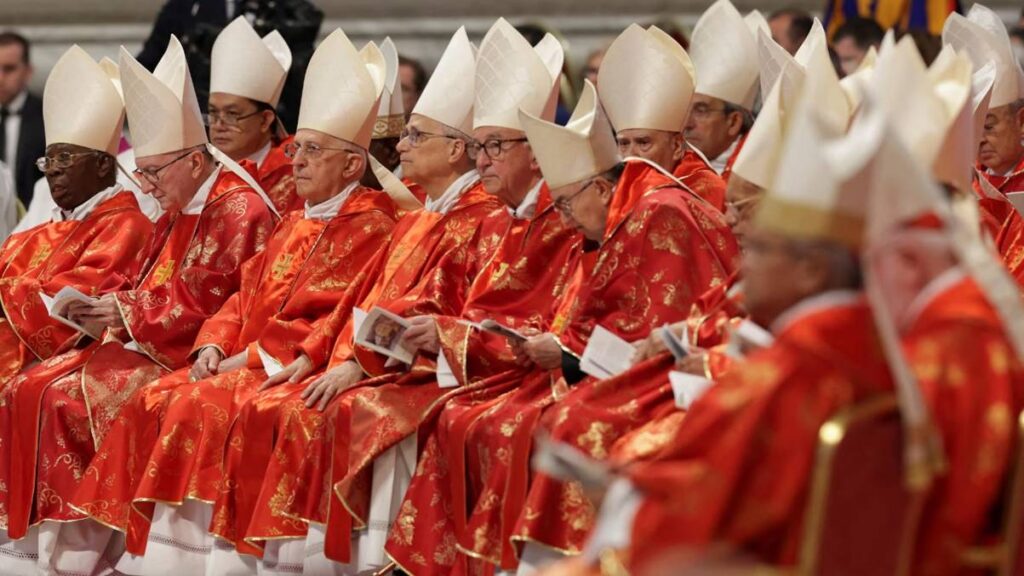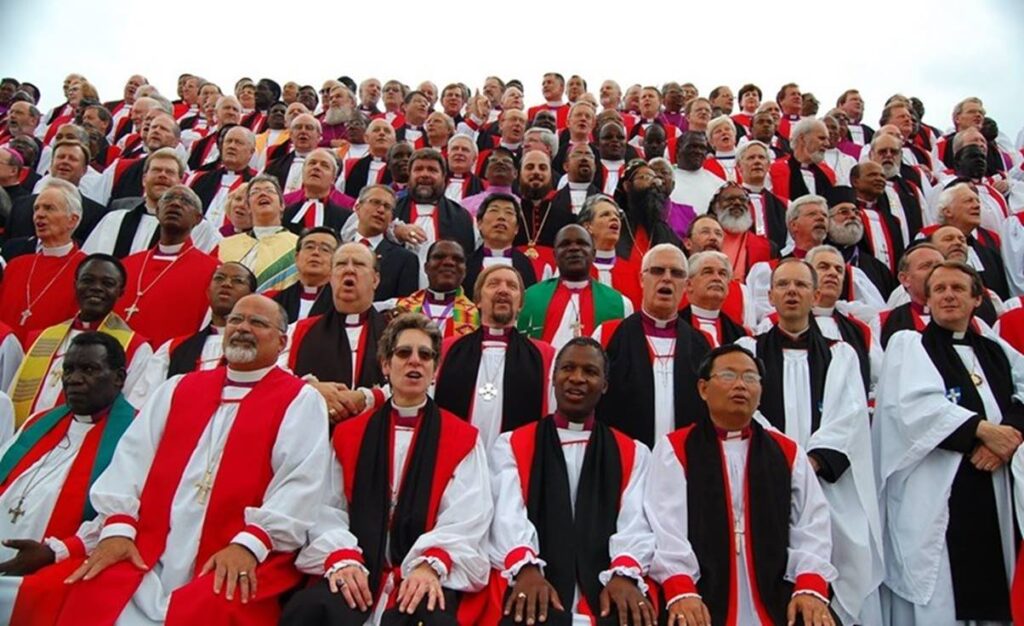by Martyn Percy
In a famous scene from The Matrix movie, there is moment which offers a tantalizing insight into drugs that have the power to awaken any pill-popper to three quite different hidden realities. A red pill inducts the consumer into a world of secret right-wing truths. A white pill will persuade the user that the situation of the wider world is rather better than you had imagined. A black pill, once digested, tells you know just how doomed we really are.
It is hardly a hidden reality that the story of the Church of England in the 21st century has been largely shaped by a cocktail of black and white pills. In just 25 years there have been countless prophecies of doom, with alarm bells ringing to announce the next imminent crisis (i.e., pensions, vocations, ageing-dwindling congregations, soaring costs, abuse scandals, etc) that are of the black pill variety. And there have been legions of initiatives that are white-pilled, and purport to reverse every negative trend. The result is a church addicted to prescriptions and remedies in ever-higher dosage that boasts every shade of grey.
At the same time, there are a handful of commentators who only see red pills, as though the Church of England was being taken over by a small handful of right-wing ideologies. Personally, I doubt this very much. The Church of England and the wider global Anglican church is simply being consumed by process. Executive managerialism has become the parasite of eating the organism from the inside. What the church once consumed is now consuming it from within. This is a church being hollowed out by processes it neither comprehends – nor can expel.
The last time the Papal office and the Archbishop of Canterbury role were both vacant simultaneously was 334 years ago. Canterbury was vacated after the then-Archbishop was refused to swear allegiance to William and Mary and the office vacant between February 1690 and May 1691. The Papacy was also vacant following the death of Pope Alexander VIII in February 1691, with a new Pope not elected until 161 days later.
Modern conclaves tend to be rather quicker. Cardinals will hear about the death of a Pontiff within moments of his passing. The cardinals can gather fast, and the demands of a media age probably means they get down to business quickly. Even with over 130 voting members of the conclave, the selection of Pope Leo XIV took just four rounds of voting over two days to emerge as the chosen candidate. The white smoke is an emoji to signal the new era.
The process for choosing the next Archbishop of Canterbury could hardly be more different. Having agreed to resign in November 2024, the process for selecting a successor to Justin Welby has quickly lurched from tragedy to farce. There is a dispute over the nominated electors from Canterbury Diocese, and a further dispute over the rules to elect the electors. The likelihood of a name emerging by the autumn seems slim, even though there are only 17 people on the committee to make this decision. The committee is another aspect of the Church of England’s Grey-sphere.
If a picture is worth around a thousand words, then the images of all the cardinals gathered in identical kit for the funeral of Pope Francis and then for the conclave to elect Pope Leo XIV are telling. And certainly, when compared to the last Lambeth Conference for Anglican bishops gathered from across the world.
The conclave and its attendant public liturgies presented an impressive regiment of imperial uniform (red robes eerily resonant of Atwood’s Handmaid’s Tale). Unity and uniformity are dress coded. The Anglican gathering, in contrast, looks more like a liturgical garage sale and charity shop rummage. Little matches. Disunity and diversity are dress coded too. Bishops wear what they want. Some bishops – notably Sydney Archdiocese – decline to wear liturgical attire at all, if it can be avoided.
In contrast, the pictures of the funeral for Pope Francis could have been lifted from a well-choreographed scene in the Star Wars movies. The zoned marshalling in St. Peter’s Square represents an expression of imperial ordering. Yet at the same time, framed by ordinary mourners expressing their gratitude for their Pope and Father in God.

At the Conclave in Rome

The Lambeth Conference
The contrast between a conclave (the term means, literally, ‘a locked room’) to elect a Pope and the committee set up to choose a new Archbishop of Canterbury are as night and day. The former is rooted in two millennia of prayer-soaked practice. The latter is a secular process with an added spiritual gloss. Yet the committee will be just as secret.
The body charged with choosing the next Archbishop of Canterbury represents a hangover from an English colonial civil service culture where key decisions and appointments are made behind closed doors in some private smoke-filled room of a London club. Take away the smoke and the club for 21st century sensibilities, and you’re essentially left with the same process. True, there is a nod to democracy (though the nominees given the task of electing are currently the subject of dispute). Yet as a committee, there is more opacity than one might encounter at a conclave.
What can’t be addressed by the next incumbent of Lambeth Palace is the unresolved nature of the Church of England’s identity. Since 1834 many Anglicans have bought into the myth that it has two pedigrees. On the one hand it is Protestant Reformed. On the other hand, it is Catholic. Some Anglicans go further, and entertain fantasies of reunion with Rome, forgetting that the core theology of the Church of England is Reformed Protestantism, and that the Head of the Church is the reigning English monarch, not the occupant of the Vatican.
This confusion of identity cuts no ice at the proverbial Church-Crufts Show. Anglicanism is a hybrid; a mongrel denomination that is sartorially and liturgically Catholic (sometimes), but theologically and organisationally Protestant (sometimes). Anglican Bishops dressed in purple are left stranded in the middle, trying to hold together two slowly bifurcating tectonic plates. Today, most English Anglican Bishops enjoy unchecked executive power, but with almost no pedigree of theological nous. Their real authority lies in pastoral praxis, but few have the energy to inhabit that aspect of their role. Bishops are often found to be desk-bound bureaucrats, firing off emails and issuing shiny-white-pill policy documents with fanciful vision statements, warding off the panic attack side-effects of corporate black-pill addiction.
The next incumbent of Lambeth Palace could do worse and take an honest and serious look at the identity issues that have lain unaddressed since the Church of England divorced itself from Rome in 1534. Anglicanism is essentially a branch of Protestantism. True, and unlike other Reformed churches, Anglicans kept their bishops and some of its clergy and churches continue to adapt their liturgies and clerical dress codes from Rome. Others do not, and opt for a more ‘happy-clappy’ style of worship. There is no central power or authority in Anglican polity to counter the exercise of such freedoms and unable to police its diversity.
There is no liturgical uniformity. There is no central system of canon law. Many Anglican Provinces do not require affirmation of the thirty-nine articles of faith. Some Provinces have outlawed liturgical practices and clerical attire that became fashionable through Victorian ritualism. Theologically and organisationally, Anglicanism is essentially a Protestant expression of Christianity. Some Anglican churches will avoid using the prayer of confession in liturgy. Others have liturgies of baptism that feel more like a service of exorcism.
What the Church of England needs is serious authentic clarity. It is time to stop pretending that global Anglicanism is like Roman Catholicism, and in the same global orbit. It isn’t. This current process to choose a new Archbishop of Canterbury cannot possibly inspire confidence or attract affection, trust or faith. The committee is a crystallisation of the confused mindset that reflects the state that the Church of England finds itself in. Like the black-white pill cocktail, a committee-led process is bound to produce yet another shade of grey.
The next Archbishop cannot come from a conclave. Nor, alas, can she or he emerge from the kinds of democratic, open and transparent election processes that some other parts of global Anglicanism have adopted for electing bishops. An elitist English Anglican establishment will always shy away from egalitarian ecclesiology. But if the Church of England were to own its Protestant identity more explicitly, it might find that a genuinely democratic synod would attract far more public support than some secretive committee ever could.
Well, that really hits the nail on the head.
We do not have a coherent philosophy or theology.
Roman Catholics can claim that the only way of salvation is through their Church, if you are baptised by them you’re on your way, and they’ll help you through purgatory.
We realise that such claims are untenable today, but we have nothing to put in their place.
We dare not claim that those of other faiths, or none, will fail to join us in paradise along with the penitent thief on the cross. So what is the point of Anglicanism? Would we all be better off playing football on a Sunday morning?
Yes we would .
I’d vastly prefer a garden centre to football.
There used to be a long established expression of Anglicanism where the Apostle’s Creed at Morning Prayer defined the essence of what we believe and how it is to be consistently expressed. Latterly, I tend to see what we might call ‘Pentecostal Anglicanism’. It can be energetic and have positives, but lots of people get burnt out by aspects of it. The Pilavachi story is quite possibly just the cherry on the icing of a very much bigger cake.
Are classic CSL or GKC apologetics actively scorned within the Texan fundamentalist wing of Anglicanism? Is GCT or YEC the order of the day in some cliques?. There can be an unhealthy emphasis on leadership authority, tithing, growth and business success. Savage ill-treatment of people can get cynically covered up on a huge scale-“to protect the reputation of the Church”.
A lot of Anglicans elect to stay-but not pay or commit excessively. Others depart for Catholicism-Orthodoxy-Reformed Churches. Either of these options may be better than getting duped by the likes of Pilavachi and his chums.
Of course one of the useful features of the conclave is that all of the cardinals are candidates for the job of being pope. It’s a very internally-moderated process. Participation in the rituals is part of playing the process.
Sitting on the Crown Nominations Commission automatically rules one out of contention for the Canterbury role. It would be intriguing to see what would happen if they had to elect one of their own number…
In an episcopal system of Church govt to have C of E Bishops elect the Archbishop would make profound sense. It would also add welcome transparency. Do the public actually know, or Anglicans, who sits on the CNB or why they are included? I guess the CNB possibly exercise the whore’s prerogative-if they are not likely to ever be directly held to account by the Church membership or clergy……….
The scene from the Matrix is red pill (discover reality, and freedom) Vs blue pill (stay in the illusory world constructed by your captors). Black and white pills are nowhere to be found, though they are a meme found on incel forums. Sorry to mess up the metaphor.
The metaphor of pills fixing things works exceptionally well here! Is NHS antidepressant use driven to a degree by business and the pharmaceutical industry? The Anglican Church maybe has a similar issue with leadership cliques seeking magic solutions using money and business derived tactics. Do growth and appearance of success count far too much?